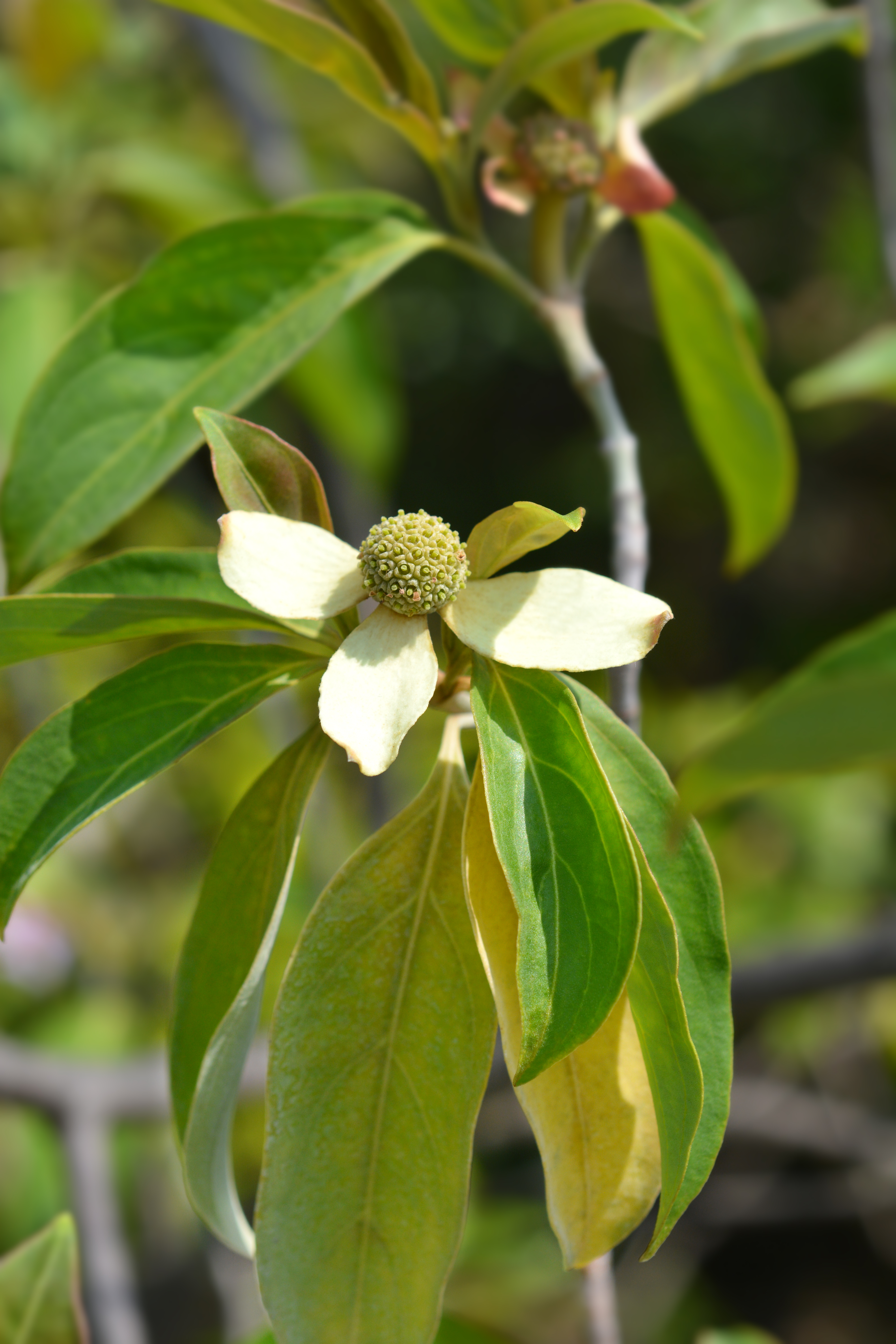Evergreen dogwood
(Cornus capitata)

Description
Cornus capitata is a small tree or shrub native to the Himalayan region, where it grows in forests at altitudes of 2,000 to 3,500 meters. It belongs to the dogwood family, Cornaceae, and is commonly known as the Himalayan strawberry tree, evergreen dogwood, or Himalayan cornelian cherry. This species is a popular ornamental plant in gardens and parks, prized for its attractive foliage and showy fruits. Taxonomy and Naming The genus Cornus includes about 60 species of trees and shrubs that are distributed throughout the temperate regions of the world. The name Cornus is derived from the Latin word cornu, which means horn, referring to the hard wood of the trees. The species name capitata means "with a head," referring to the clustered arrangement of the flowers. Description Cornus capitata is a small tree or shrub that typically grows up to 10 meters tall and 5 meters wide. It has a rounded crown, with spreading branches that form a dense canopy. The bark is brownish-gray and smooth, with shallow fissures as the tree ages. The leaves are evergreen, leathery, and glossy, 5 to 15 centimeters long and 3 to 7 centimeters wide, with a prominent midrib and veins. They are oval to elliptical in shape, with an acuminate apex and an entire margin. The upper surface is dark green, while the lower surface is pale green and covered with fine hairs. The flowers of Cornus capitata are small, creamy-white, and fragrant. They are produced in clusters of 20 to 30, each cluster measuring 5 to 7 centimeters in diameter. The flowers are surrounded by four white bracts that resemble petals, which are 2 to 3 centimeters long and 1 to 2 centimeters wide. The bracts gradually turn pink as the flowers mature, giving the tree an attractive appearance. The fruit of Cornus capitata is a round or slightly elongated drupe, 2 to 3 centimeters in diameter, that ripens from green to bright red in late summer. The fruit has a sweet, juicy, and slightly tart flavor, similar to a strawberry, and is edible. However, the fruit is not widely consumed, as it is difficult to harvest and has a short shelf life. Distribution and Habitat Cornus capitata is native to the Himalayan region, where it is found in forests at altitudes of 2,000 to 3,500 meters. Its range extends from eastern Afghanistan and northern Pakistan to Bhutan, India, Nepal, and southern China. In its native habitat, the tree grows in well-drained soils that are rich in organic matter, and it prefers a cool and moist climate. Cultivation and Uses Cornus capitata is a popular ornamental plant in gardens and parks, grown for its attractive foliage and showy fruits. It is a slow-growing tree that requires well-drained soil and partial shade to full sun exposure. The tree is hardy to USDA zones 7 to 10, which means it can tolerate temperatures as low as -18°C. Propagation of Cornus capitata can be done by seed or by hardwood cuttings taken in winter. The seeds should be collected from ripe fruits and sown in a mixture of sand and peat moss. The cuttings should be taken from the previous year's growth, treated with rooting hormone, and planted in a mixture of sand and peat moss. In addition to its ornamental value, Cornus capitata has several medicinal uses in traditional Chinese and Tibetan medicine. The bark, leaves, and fruits are used to treat a variety of ailments, including fever and inflammation.
Taxonomic tree:







